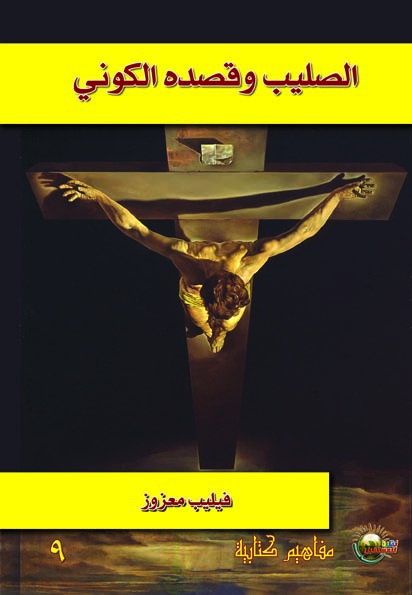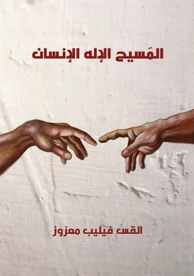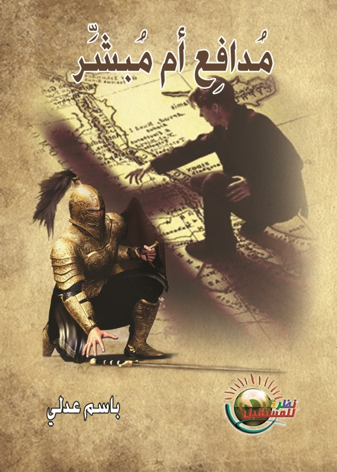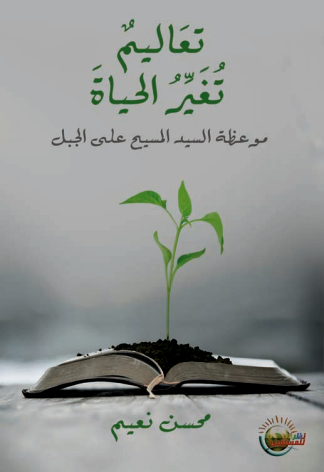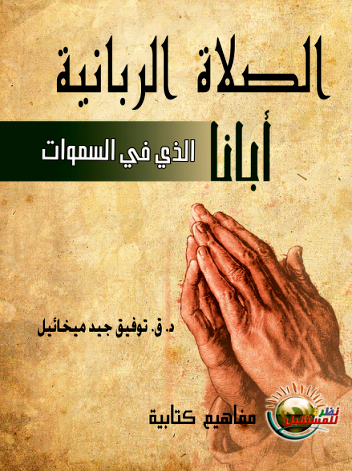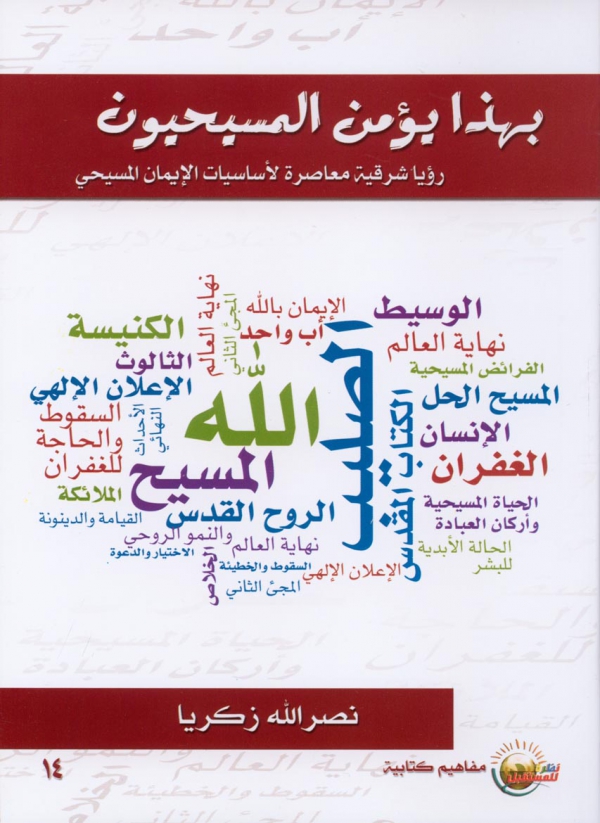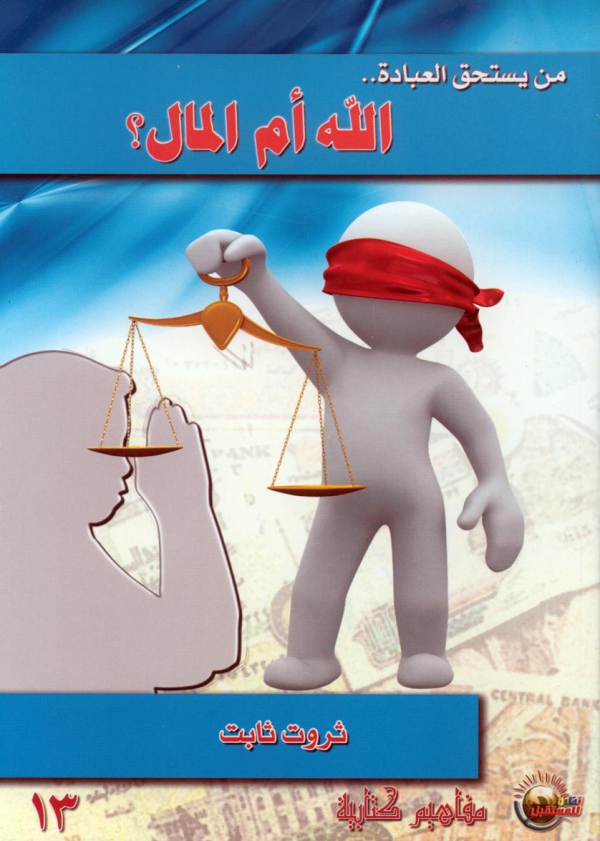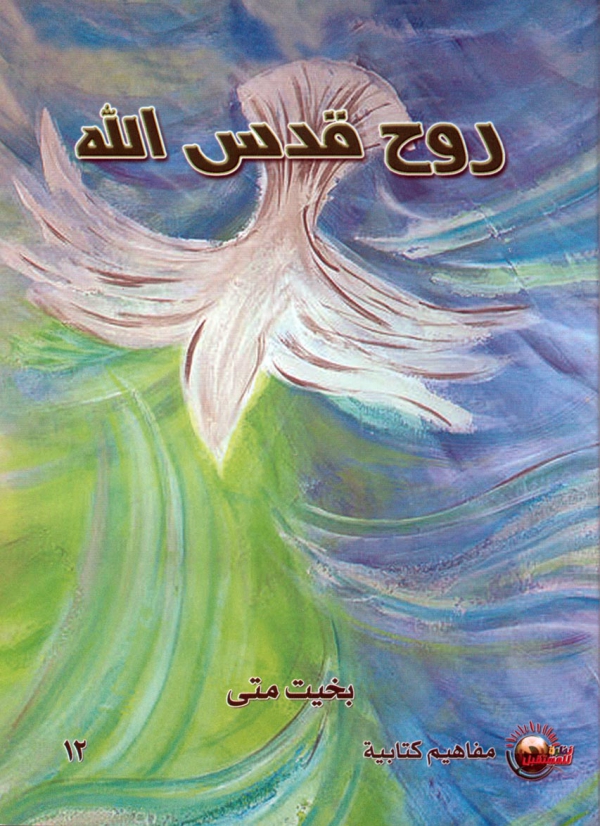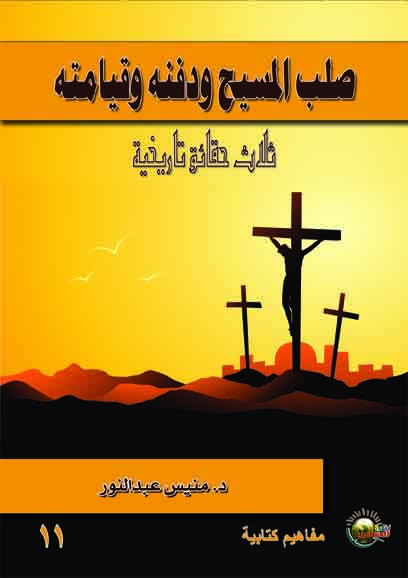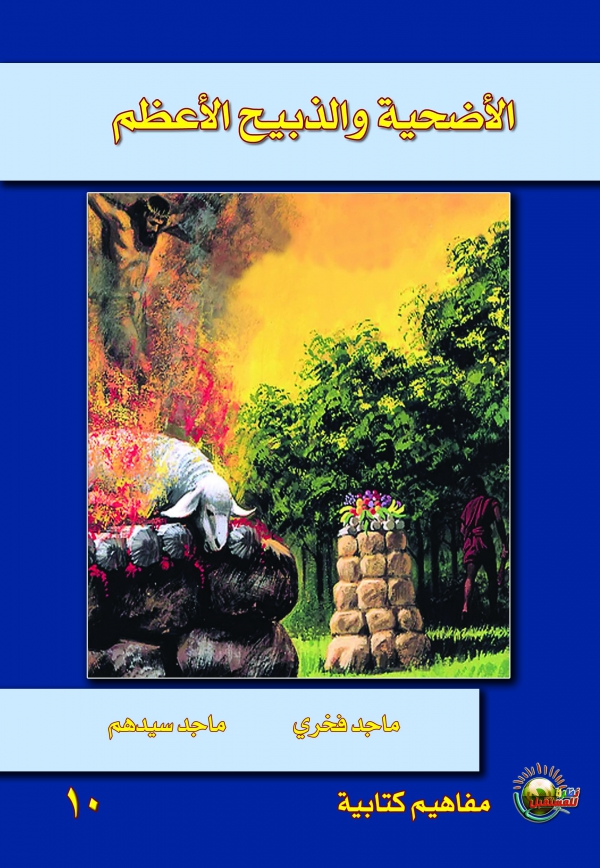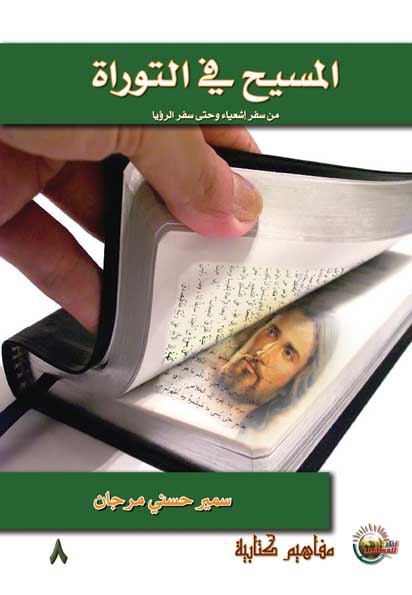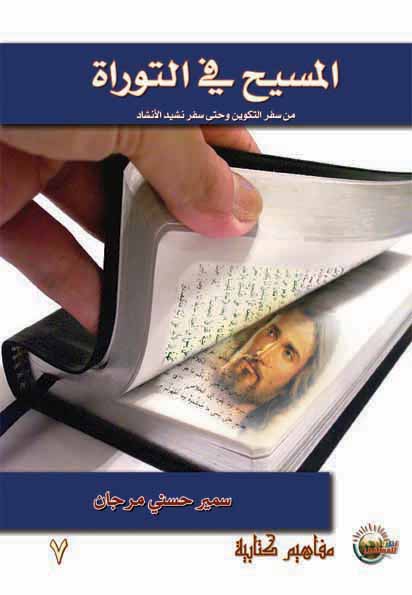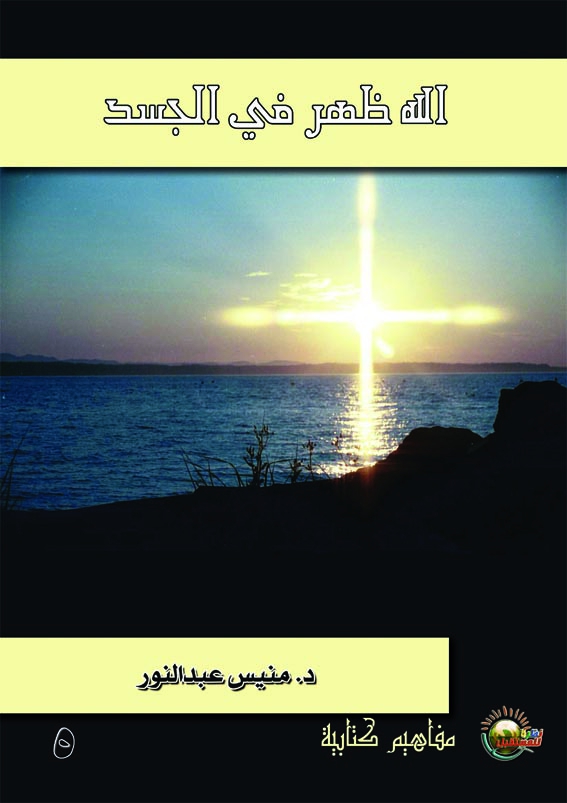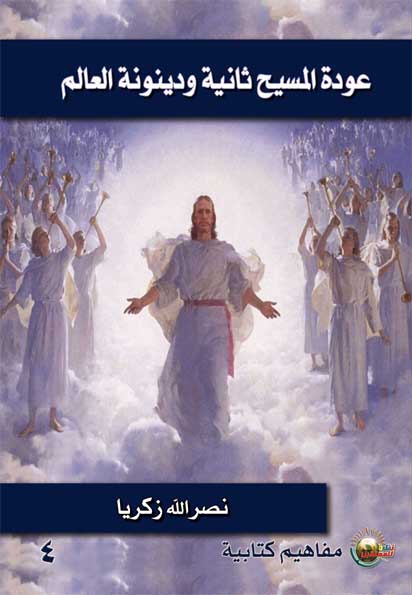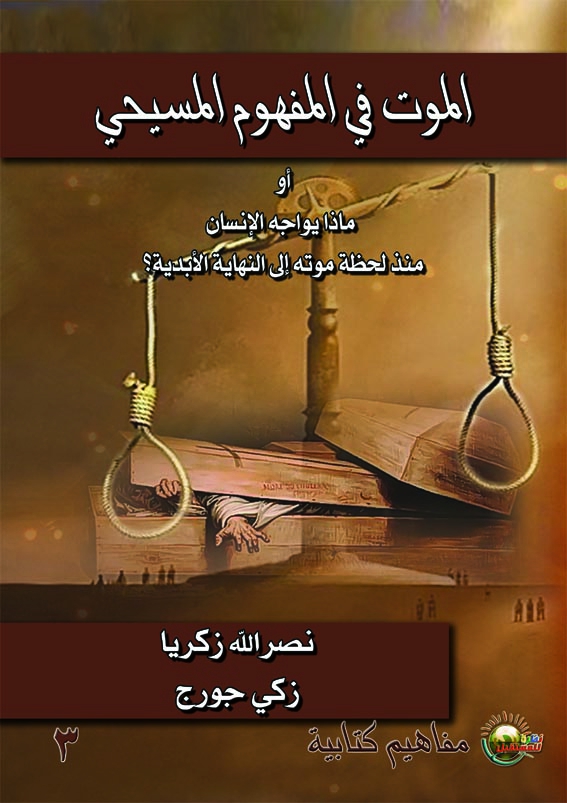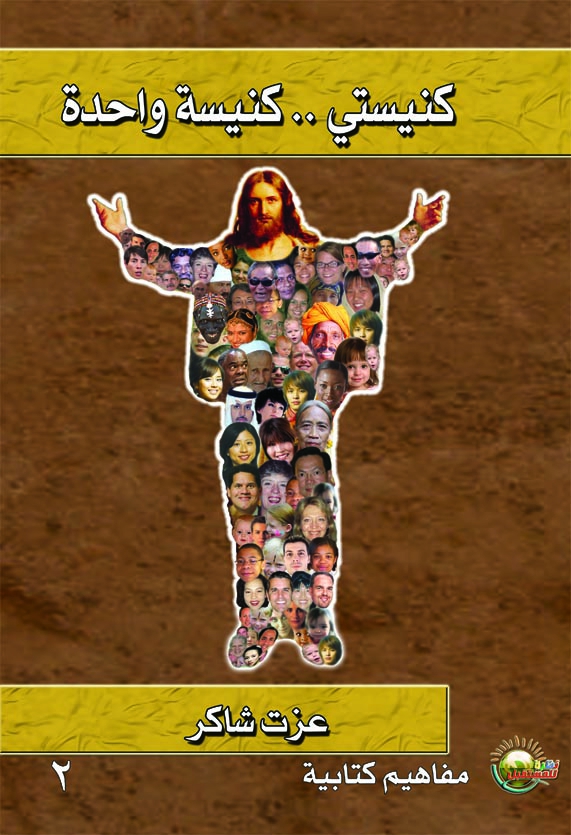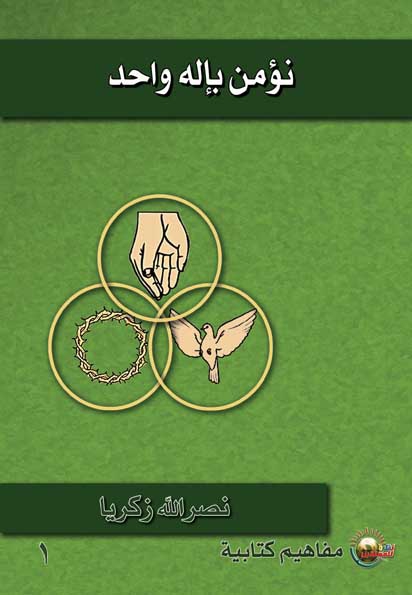Biblical Concepts
There is no doubt that we are all prone to stumbling in our spiritual life due to the wrong concepts of theology which we have formed in our minds. This series is designed to discuss key spiritual concepts in a way that reveals and clarifies biblical truths and is comprehensible to the contemporary Arabic mind.
The Cross And Its Cosmic Purpose
Author: Rev. Philip Maazuz
Publisher: Vision For Future
The truth of Jesus' Cross is the greatest truth. More accurately, it is the purpose of the Scriptures, the Center of Biblical faith, and the axis of the wheel of human history. The entire universe was founded for it. There is nothing of more precious meaning in man's existence than that God suffered for man's sin, redeeming him and fashioning a pure and holy church that could dwell with Him in eternal glory.
Since the story of the cross is the focus of our Christian faith, and the source of our eternal salvation, we should put great effort into explaining it in all its richness. This is what Rev. Philip Maazuz attempts to do in his book, "The Cross and its universal purpose." The medium sized book, of nearly 200 pages, is divided into the four parts described below.
Part I: The Eternal Roots of The Cross
The author argues that in order to understand the eternal roots of the Cross, we must delve into some of its associated elements, each of which must be scrutinized through biblical study, beginning with creation, and continuing with the list below:
- Creation of man and the pre-fall
- Origin of Satan and his role
- Inability of people's deeds to cover their sin in front of God's justice
- God's covenants before the fullness of time (i.e., before the Incarnation)
- God's holiness and his anger over sin
- The Cross in the thoughts of the eternal love of God
- Indications and prophecies about The Cross in the Old Testament...
Next, the author refers to the truth of the cross, saying: "what we mean by the cross is not the tree on which Jesus was hanged. The cross of Christ is the altar on which He was slain. The altar is Christ himself, because he is the sacrifice. He is the altar and the priest in whom we can delight spiritually when we receive faith by grace. Therefore, it is a feast for every true believer."
The focus of the New Testament's writers was never on the historical side of the cross—being made of wood or of some other material, or being an execution instrument at that time in history; they didn't sanctify the material itself—rather, their focus was on the eternal spiritual atoning side and that is the death of the Lord Jesus Christ, son of God. They used the word "cross" as a brief expression of the gospel of salvation which is the death of Christ Himself.
Part Two: In the context of talking about the reality of the cross, the author speaks of the essence of the Cross in the fullness of time, addressing the following themes:
- Important meanings of the person of the Redeemer
- Interpretation of the reality the cross
- The Cross of God's grace where justice embraces mercy
- The covenant in the light of the cross
- The law in the light of the cross
Part Three deals with the eternal impact of the Cross and the most important blessings believers get when they receive the work of the cross and the salvation of Christ into their lives. Ten major motifs are expanded upon in this section of the book.
First: Redemption:
The redeemer carries the comprehensive sense of redemption, which includes: renewal, justification, adoption, sanctification and resurrection. Redemption is the release of the captive and freeing him from sin, destruction and death that caught him.
Among the most important meanings of the redemption of Christ on the cross are:
1. Christ loved us and showed us His loving kindness.
2. Christ saw our inability to save our souls.
3. The price that Christ paid became the ransom on our behalf.
4. The price that Christ paid is His infinitely precious blood (divine blood) and by it he has ransomed us with an eternal redemption.
5. The price that Christ paid fulfilled the demands of the law, overcoming the power of sin.
Second: The Atonement:
The Bible says: "and all are justified freely by his grace, through the redemption that came by Christ Jesus. God presented Christ as a sacrifice of atonement, [in Greek "Hilastrion" means propitiation or satisfaction]... through the shedding of his blood—to be received by faith. He did this to demonstrate his righteousness, because in his forbearance he had left the sins committed beforehand unpunished—"
Third: Justification:
An act of God's free grace to forgive all sins.
Fourth: Reconciliation:
Reconciliation is making peace between two parties and restoring the relationship between them. While justification is the judicial innocence before the Court of God's justice, reconciliation is the restoration of the personal relationship with God as a father.
Fifth: Adoption:
The main privileges of adoption are identified and explained:
1) To remove the implications of the old family (first family of Adam).
2) To recognize the reality of God's eternal choice for the adopted believer.
3) To enjoy the spirit of adoption (The Holy Spirit is the seal and pledge of adoption).
4) To receive God's guidance by the Holy Spirit; His consolation and discipline.
5) To enjoy the eternal pledge of receiving God's eternal inheritance.
Sixth: Washing:
The first sense of washing is the full washing that happens only once, based on the shedding of the blood of the Lord Jesus on the cross. The second sense is a partial washing that is repeated throughout our lifetime, in this wilderness, because we are exposed to contamination. For this, we need to be purified continuously, due to the inadvertent contact with the world every day. This purification is not literal, but it is a fully divine work, carried out by Jesus himself, using His word in us to wash our souls.
Seventh: The priesthood of Christ and His intercession:
God acknowledged the system of priesthood from the beginning, when He announced to his people that they would be a kingdom of priests and a holy nation. He provided the Jews with the ritual priesthood as a temporary thing since it was not accompanied by a divine oath that it should remain or be maintained.
Priesthood was associated with God's earthly dwelling. With the demise of the temple, the priesthood's system of ritual was over. It was associated with the Law of physical commandments (human rituals). It was associated with animal sacrifices that do not remove sin. It was overseen by the weak chief priests. There were many such priests, since death prevented them from continuing in their office, unlike Christ.
Eighth: Sanctification:
It should be noted in this regard that sanctification is an experienced continual work. It is incomplete in this life, but completed when we put on, and are clothed with, the glorified resurrected body.
Ninth: Access to the presence of God (true worship fulfilled):
The author presents us with a very important aspect of the spiritual life of the believer, which is worship through the Cross of Christ.
Tenth: The victory over Satan and his hosts:
Believers in Christ now do not need to seek to reach the victory. Rather, they are striving from the inside to grasp the reality of their victory, which Christ has already achieved, with greatness and potency on the Cross of Calvary. In the greatness of this victory the believer becomes a member of the body of Christ; flesh of His flesh and bone of His bones. He now lives in the power of the resurrection of Christ.
The writer concludes this part of the book by talking about the impact of The Cross of Christ on the inner being; the blessings associated with the pouring of the Holy Spirit on the church the day of Pentecost; and the Eschatology associated with the truth of the cross of Christ.
Part Four: To conclude his study, the author provides us with excerpts from the crucifixion.
The most important and last word uttered by the Lord Jesus on the cross, the carrying of The Cross is the essence of discipleship. We need to learn how to carry the cross, and must ask why God wants us to carry one. Among the remaining topics covered in this section are: the death of a kernel of wheat, the apparent paradox, the furnace of affliction, and Jesus as God with scars.
